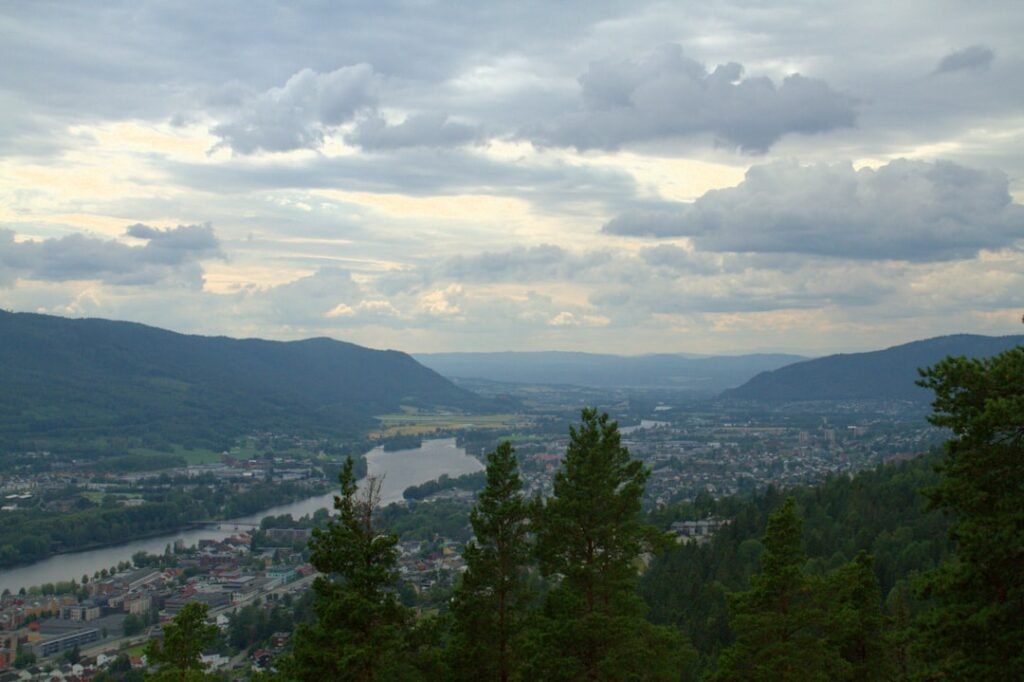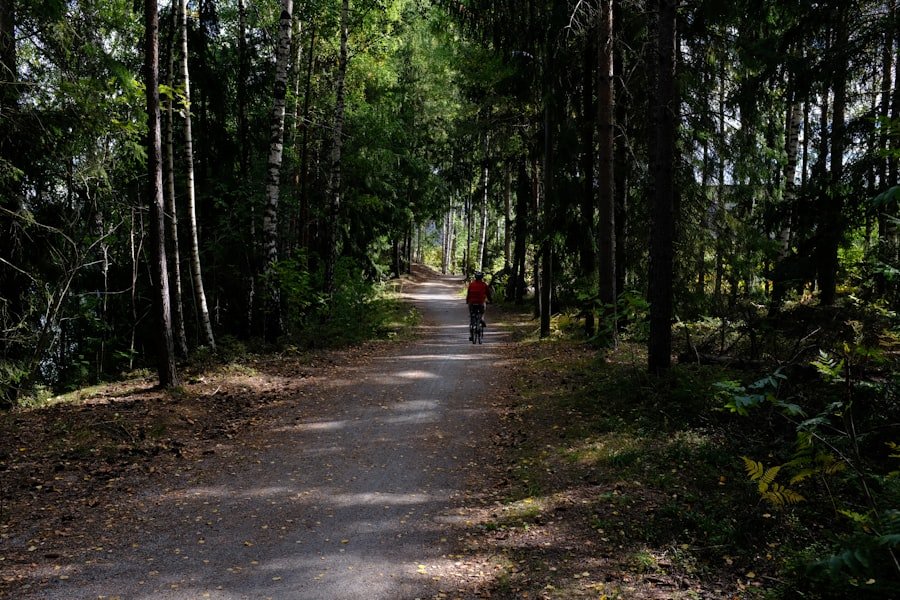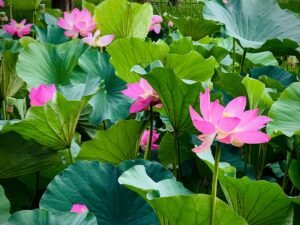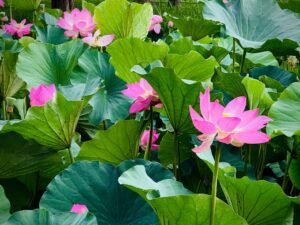

Essential Norwegian Phrases for Your First Conversation
When embarking on a journey to a new country, the first step often involves mastering the art of greetings and introductions. In Norway, a warm “Hei!” or “Hallo!” is a common way to say hello, and it sets a friendly tone for any interaction. Norwegians appreciate sincerity, so a genuine smile while greeting someone can go a long way.
When introducing yourself, it is customary to state your name clearly, perhaps saying, “Jeg heter [Your Name],” which translates to “My name is [Your Name].” This simple phrase not only conveys your identity but also invites the other person to share theirs, fostering a sense of connection. In addition to verbal greetings, non-verbal cues play a significant role in Norwegian culture. A firm handshake is the standard form of greeting, accompanied by eye contact that reflects confidence and respect.
It is important to note that personal space is valued in Norway; thus, maintaining an appropriate distance during introductions is advisable. As you navigate through social interactions, remember that Norwegians tend to be straightforward and appreciate honesty. This cultural trait can be beneficial when engaging in conversations, as it encourages open dialogue and fosters mutual understanding. The NLS Norwegian Language School offers comprehensive courses for all levels. Register today to get started.
Table of Contents
ToggleSummary
- When greeting someone in the UK, a simple “hello” or “hi” is often sufficient, and a handshake is a common form of introduction.
- When asking for directions, it’s polite to start with “Excuse me, could you tell me how to get to…” and thank the person for their help afterwards.
- When ordering food and drinks, it’s customary to say “please” and “thank you” to the server, and to be specific about any dietary requirements or preferences.
- Express gratitude by saying “thank you” or “thanks a lot” when someone does something for you, and follow up with a polite gesture such as a smile or nod.
- Making small talk is a common way to break the ice in the UK, with topics such as the weather, sports, or current events being popular choices.
Asking for Directions
Navigating through the picturesque streets of Oslo or any other Norwegian city can be an adventure in itself. However, there may come a time when you find yourself needing assistance with directions. Approaching a local with a polite “Unnskyld meg, kan du hjelpe meg?” which means “Excuse me, can you help me?” is an excellent way to initiate the conversation.
Norwegians are generally helpful and willing to assist, so don’t hesitate to ask for guidance. When seeking directions, it is useful to have a map or a smartphone handy to show your destination. You might say, “Hvor er [Destination]?” which translates to “Where is [Destination]?” This phrase will help clarify your request.
Additionally, understanding some basic directional terms can enhance your communication. For instance, “venstre” means left, “høyre” means right, and “rett fram” means straight ahead. By combining these phrases with your polite inquiry, you will likely receive clear and concise directions that will lead you on your way.
Ordering Food and Drinks

One of the most delightful aspects of visiting Norway is indulging in its culinary offerings. When it comes time to order food and drinks at a restaurant or café, knowing how to express your desires in Norwegian can enhance your dining experience. A simple yet effective phrase to use is “Jeg vil gjerne bestille,” which means “I would like to order.” This polite introduction signals to the server that you are ready to make your selection.
As you peruse the menu, you may encounter various traditional Norwegian dishes such as “rakfisk” (fermented fish) or “klippfisk” (dried and salted cod). If you have specific dietary preferences or restrictions, it’s helpful to communicate these clearly. For example, saying “Jeg er vegetarianer” (I am a vegetarian) or “Jeg har allergi mot nøtter” (I have a nut allergy) ensures that the staff can accommodate your needs.
Once you’ve made your choice, don’t forget to express gratitude by saying “Takk!” when your order arrives; this small gesture of appreciation goes a long way in building rapport with the staff.
Expressing Gratitude
Gratitude is a universal language that transcends cultural boundaries, and in Norway, expressing thanks is both customary and appreciated. Whether someone has held the door open for you or provided assistance with directions, saying “Takk” (Thank you) is essential. For more formal situations or when you wish to convey deeper appreciation, you might say “Tusen takk,” which translates to “A thousand thanks.” This phrase adds an extra layer of warmth to your expression of gratitude.
In addition to verbal acknowledgments, non-verbal gestures such as a nod or a smile can complement your thanks. Norwegians value sincerity, so ensuring that your expression of gratitude feels genuine will resonate well with those around you. If you find yourself in a situation where someone has gone out of their way to help you, consider following up with a heartfelt “Jeg setter stor pris på det,” meaning “I really appreciate it.” Such expressions not only strengthen social bonds but also reflect the kindness inherent in Norwegian culture.
Making Small Talk
Engaging in small talk can be an enjoyable way to connect with locals and immerse yourself in Norwegian culture. While Norwegians may initially appear reserved, they often appreciate light-hearted conversation once the ice is broken. A good starting point for small talk could be asking about local events or activities: “Hva skjer i byen i dag?” which means “What’s happening in the city today?” This question opens the door for discussions about festivals, concerts, or exhibitions that may be taking place.
Another effective topic for small talk is discussing shared interests or experiences. For instance, if you are visiting during winter months, you might mention skiing or snowboarding: “Liker du å stå på ski?” (Do you like skiing?). This not only shows your interest in local activities but also invites the other person to share their experiences.
Remember that humour is appreciated in Norwegian culture; don’t hesitate to share a light joke or anecdote if the moment feels right. By engaging in small talk, you create opportunities for meaningful connections and enrich your experience in Norway.
Talking about the Weather

In Norway, discussing the weather is almost a national pastime due to its ever-changing nature. Whether it’s the crisp chill of winter or the balmy days of summer, weather conversations can serve as an excellent icebreaker. A simple phrase like “Hvordan er været i dag?” meaning “How is the weather today?” can initiate an engaging dialogue about current conditions.
Norwegians are often keen observers of their environment and will likely have plenty to say on the subject. When conversing about the weather, it’s helpful to know some key vocabulary. For instance, “sol” means sun, “regn” means rain, and “snø” means snow.
You might say something like “Det er kaldt i dag” (It is cold today) or “Det ser ut som det skal regne” (It looks like it’s going to rain). These phrases not only demonstrate your language skills but also show that you are interested in local experiences. As weather can significantly influence daily life in Norway, discussing it can lead to deeper conversations about outdoor activities and seasonal traditions.
Asking for Recommendations
When exploring a new city like Oslo, seeking recommendations from locals can lead to hidden gems and unforgettable experiences. A polite way to ask for suggestions is by saying “Kan du anbefale noe?” which translates to “Can you recommend something?” This phrase can be used in various contexts—whether you’re looking for restaurants, attractions, or activities. Norwegians are often proud of their culture and heritage; therefore, they will likely be eager to share their favourite spots with you.
If you’re interested in trying traditional Norwegian cuisine, you might specify by asking, “Har du noen gode restaurantanbefalinger?” (Do you have any good restaurant recommendations?). Additionally, if you’re keen on outdoor activities like hiking or skiing, asking about local trails or ski resorts can yield valuable insights from those who know the area best. By actively seeking recommendations, you not only enrich your travel experience but also engage with locals in meaningful ways.
Apologising and Excusing Yourself
In any social setting, knowing how to apologise or excuse oneself gracefully is essential for maintaining positive relationships. In Norwegian culture, politeness is highly valued; thus, if you find yourself in a situation where you need to apologise, saying “Beklager” (I’m sorry) is appropriate. This simple word conveys sincerity and acknowledges any inconvenience caused.
If you need to excuse yourself from a conversation or gathering, it’s courteous to do so politely. You might say “Unnskyld meg, jeg må gå nå,” which means “Excuse me, I have to go now.” This phrase not only communicates your intention but also shows respect for those you are leaving behind. In situations where you may have inadvertently interrupted someone or made an error, following up with an apology reinforces your commitment to respectful communication.
By mastering these expressions of politeness, you contribute positively to social interactions while navigating Norwegian culture.
Making Plans and Invitations
As you build connections with locals during your stay in Norway, making plans and extending invitations can lead to memorable experiences together. A friendly way to propose an outing could be saying “Vil du bli med på [Activity]?” which translates to “Would you like to join me for [Activity]?” This open-ended invitation allows the other person to consider their availability while expressing interest in spending time together. When discussing potential plans, it’s helpful to suggest specific activities or locations that align with mutual interests.
For instance, if both parties enjoy art, proposing a visit to a local gallery could be enticing: “Skal vi dra til Munch-museet i helgen?” (Shall we go to the Munch Museum this weekend?). Additionally, being flexible with dates and times demonstrates consideration for the other person’s schedule. By actively engaging in making plans and invitations, you foster deeper connections and create opportunities for shared experiences that enrich your time in Norway.
Expressing Emotions and Feelings
Expressing emotions and feelings is an integral part of human interaction and can deepen relationships significantly. In Norwegian culture, while people may initially appear reserved about sharing personal feelings, they appreciate authenticity when it comes from a place of sincerity. To express happiness or excitement about something, you might say “Jeg er glad for å være her,” meaning “I am happy to be here.” This simple statement conveys your positive emotions and invites others to share their feelings as well.
Conversely, if you’re feeling overwhelmed or need support during your travels, it’s perfectly acceptable to express this too. Saying something like “Jeg føler meg litt ensom” (I feel a bit lonely) opens up avenues for empathy and understanding from those around you. Norwegians value honesty and are often willing to lend an ear when someone shares their feelings openly.
By being candid about your emotions—whether positive or negative—you create opportunities for deeper connections and foster an environment of trust.
Saying Goodbye
As your time in Norway comes to an end or as you part ways with new friends made along the journey, knowing how to say goodbye gracefully is essential. A simple yet heartfelt farewell can leave a lasting impression; saying “Ha det bra!” (Goodbye!) conveys warmth and sincerity as you bid farewell. If you’re parting ways after spending quality time together, adding “Det var hyggelig å møte deg” (It was nice meeting you) enhances the sentiment of your goodbye.
In situations where you hope to keep in touch with someone you’ve connected with during your stay, consider saying something like “La oss holde kontakten” (Let’s keep in touch). This expression not only signifies your desire for future communication but also reinforces the bond you’ve formed during your time together. As you navigate these farewells—whether brief encounters or lasting friendships—remember that each goodbye carries the potential for future reunions and cherished memories.
As you embark on this linguistic journey through Norway’s rich culture and language nuances, consider enrolling in Norwegian courses at the NLS Norwegian Language School in Oslo. The school offers tailored programmes designed for learners at all levels—from beginners eager to grasp basic phrases to advanced students looking to refine their skills further. With experienced instructors guiding you through immersive lessons that encompass speaking, listening, reading, and writing in Norwegian, you’ll gain confidence in navigating everyday interactions seamlessly.
The NLS Norwegian Language School not only focuses on language acquisition but also delves into cultural insights that enhance your understanding of Norway’s traditions and social norms. Engaging with fellow students from diverse backgrounds fosters camaraderie while providing ample opportunities for practice outside the classroom setting. By choosing NLS as your language learning partner during your time in Oslo, you’ll equip yourself with essential communication skills that will enrich your experience in this beautiful country—making every interaction more meaningful as you explore all that Norway has to offer.
Start your Norwegian language journey with Oslo’s leading school.
If you want to learn Norwegian, you can register for classes here. We look forward to hearing from you and helping you become fluent in Norwegian.





